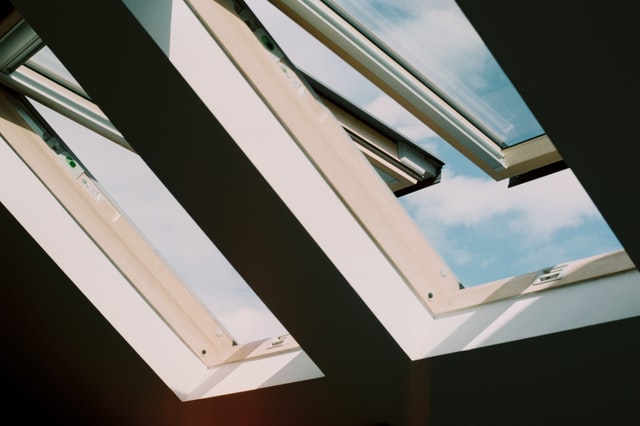
Three Types Of Skylights For Your Home
Are you thinking about adding skylights to your home or office? You’ve come to the right place. Here at Atlanta Skylights, we are the skylight professionals and are certified VELUX installers. So what are the different types of skylights for your home?
There are numerous benefits of adding skylights to your home. From boosting your home’s natural brightness to improving your wellbeing and saving energy and money, skylights improve the look and feel of your home or office.
But how do you know which product is best for your skylight project? And what even are skylights? Where did they come from? In addition to these questions about skylights, many homeowners are wondering, “Is my skylight going to leak?” Read on to find out what skylights are, the difference between roof lights and skylights, why skylights leak, and more.
We know why skylights are so great, but what exactly are skylights and where did skylights come from?
What is a skylight?
Put simply, a skylight is a roof window. According to the dictionary, a skylight is a window installed in a roof or ceiling that admits daylight. Skylights create open spaces for your home by letting natural light flourish while filling the room with warmth and spaciousness.
Different types of skylights include roof windows, custom skylights, sloped glazing, and tubular skylights.
What are the benefits of skylights?
Aside from being visually appealing, skylights have many incredible benefits, including creating a beautiful aesthetic and flourishing your home with natural light. In addition, skylights have great health benefits, help save energy and reduce your energy bill, and make your everyday life even brighter. Read more about the benefits of skylights for your home here.
Where did skylights come from?
Skylights in modern construction are not a new phenomenon. In fact, skylights have been around for ages. With their prevalence showcased throughout Roman Empire architecture, open and closed skylights were first introduced in the middle ages. And still today, skylights embody and reflect the exact same qualities as back then: illumination, ventilation, and true architectural beauty.
Read on to discover everything you need to know about skylights in our Everything You Need to Know About Skylights Guide.
Roof Lights vs Roof Window vs Skylight
You may be wondering what the difference between a roof light, roof window, or a skylight is, and you won’t be alone. These three terms are actually referring to the SAME thing. Over the years, these three terms have been widely used to name essentially the same thing- skylights!
What are the different types of skylights?
There are a few different types of skylights, including fixed skylights, tubular skylights, and vented skylights (also called roof windows).
1. Fixed Skylights
Fixed skylights are ideal for any room needing additional light.
Benefits of fixed skylights:
- No need to provide any ventilation
- Designed for “out-of-reach” areas
- Provide dramatic views
2. Tubular Skylights
Tubular skylights are ideal for smaller areas and enclosed spaces, such as hallways, pantries, closets, and foyers.
Benefits of tubular skylights:
- Easy to install
- Reflective tube is adjustable
- Fits into tight small spaces
3. Vented Skylights, also called “roof windows”
Vented skylights are ideal for adding extra light to any room and ventilation for rooms with excess moisture, such as in the kitchen, bathroom, or laundry room.
Benefits of vented skylights:
- Works well with high ceilings
- Easy to clean
- Close automatically when it starts to rain
Where should I put my skylight?
Which skylight direction provides the most amount of light?
It’s important to think about where you should place your skylight in terms of direction. Skylights that face different directions will deliver different amounts of light and heat at different times of the day and year. Your skylight installer will determine the best direction for your skylight, but it’s important as homeowners to know where the best placement for your skylight is.
Skylights facing north: Skylights that face north typically provide consistent illumination without absorbing or releasing too much heat.
Skylights facing south: Skylights that face south typically provide extra heat in the winter, as well as in the summer.
Skylights facing east: Skylights that face east provide the most amount of light and heat in the morning.
Skylights facing west: Skylights that face west provide the most amount of light and heat in the afternoon.
Do all skylights leak?
A common myth is that all skylights leak. However, a quality skylight installed properly by certified skylight installers will not leak. If your skylight is leaking, it is most likely due to an improper skylight installation. Some features of skylight damage may be obvious and noticeable, while other features may need to be thoroughly assessed and diagnosed by a skylight professional at Atlanta Skylights.
Find a Skylight Installer Near Me
Here at Atlanta Skylights, we are experienced skylight contractors that properly install the skylight of your dreams in your home or business at an affordable rate. If you are interested in reliable and affordable skylights for your home or business, contact us today. We specialize in skylight installation, skylight repair, commercial skylights, and residential skylights. If you are interested in installing a skylight in your home or business, call us at (678) 896-1082 or contact us here today!